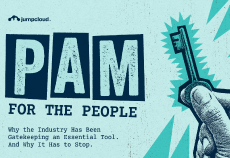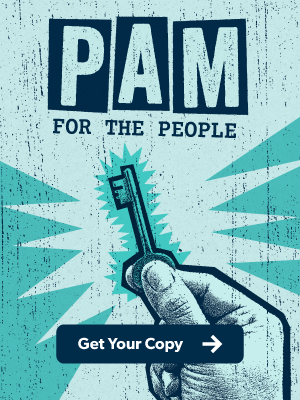High-level passwords are a top target for cyberattacks. If a hacker steals just one administrator’s password, they can take over an entire network. Protecting these passwords is a top priority for keeping a network safe.
Privileged Password Management (PPM) software is a key part of bigger security systems called Privileged Access Management (PAM) solutions. These tools are designed to secure and manage passwords for the most important accounts. But how well they work depends on more than just the software itself.
This article will explain how PPM software protects passwords. We’ll look at its security features and the real-world challenges that affect how well it works. Network administrators and security analysts need to understand both the pros and cons to decide if these tools are right for them.
Definition and Core Concepts
To understand a PPM system, you need to know a few key ideas.
- Privileged Credentials: These are passwords, keys, and other login info for high-level accounts. They include administrator passwords, root access, and keys used by applications that can make big changes to a system.
- Credential Vaulting: This is like a secure, digital safe for all high-level login info. It takes passwords and keys out of individual systems and puts them in one encrypted place. This creates a single source of truth for all privileged access.
- Automated Rotation: The system automatically changes the passwords in the vault on a set schedule or after each time they’re used. This means that even if a password is stolen, it won’t work for very long.
- Just-in-Time (JIT) Access: This gives a user a privileged password only when they need it for a specific task. It gets rid of “standing privileges,” where a user has constant access to a high-level account. This greatly reduces the chance of an attack.
How Privileged Password Management Software Works
A PPM system uses a clear process to find, secure, and manage high-level passwords.
Credential Discovery and Onboarding
First, the system scans your entire network and cloud systems to find all privileged accounts. This includes administrator accounts, shared accounts, and accounts used by services.
The system finds these accounts by:
- Scanning your network’s main directory to find which users have high-level rights.
- Looking for administrator accounts on individual computers.
- Checking for passwords used by specific applications.
- Connecting to cloud services to find privileged roles.
Once the system finds these accounts, it takes control of their passwords. It resets them to long, complex passwords and stores them in a secure, encrypted vault.
The Access Workflow
When a user needs to access an important system, they go through a secure process:
- The user requests access to a system through a secure interface. They explain why they need access.
- The system checks the user’s identity using Multi-Factor Authentication (MFA). This means the user must provide a password, a physical token, and a biometric scan.
- Once the user is approved, the system takes the password from its secure vault.
- The most secure method is called proxy injection. The system connects to the target computer and automatically enters the password for the user. The user never sees or handles the actual password.
- During the entire session, the system watches and records everything the user does. This includes what they type and what they see on the screen.
- After the session, the system can immediately change the password. This makes sure that even if the password was somehow compromised during the session, it is now useless.
API and Machine-to-Machine Credentials
A major benefit of PPM software is that it solves the problem of using hardcoded credentials. This is when a password is put directly into a computer script or application file. This is very risky.
Instead, applications now get their passwords from the secure vault. This is done through a special API, which is a way for two programs to talk to each other.
This new way of doing things is better because:
- It gets rid of passwords written in plain text in the code.
- It lets you manage all passwords from one central location.
- You can change the passwords automatically without having to update the application every time.
- It creates a record of when a program gets a password from the vault.
Key Features and Security Mechanisms
Modern PPM systems have many layers of security to protect important passwords.
- Centralized Secure Vault: This is the main security part. It’s an encrypted vault that stores passwords. It uses strong encryption to protect the information. It also keeps a history of all password changes.
- Multi-Factor Authentication (MFA): The system requires MFA to access passwords. The rules can be different for different users and systems. This means that a person’s role and location can change what they need to provide to log in.
- Session Monitoring and Auditing: The system watches and records what a user does during a session. It keeps a log of all commands, files accessed, and changes made. It can also use special software to find activities that don’t match a user’s normal behavior.
- Policy-Based Access Control: This sets very specific rules for who can get a password. Rules can be based on a user’s identity, their job, the time of day, or their location. You can also create rules that require approval before a user can access a system.
- Secrets Management: This feature protects more than just human passwords. It also secures things like API keys, certificates, and database information used by applications. This makes sure all privileged access is protected, not just the access for human users.
Evaluating True Security: Advantages and Trade-offs
A PPM system provides major security benefits, but it also has some practical considerations that affect how well it works.
Advantages
- Stops password sharing. This is the biggest security benefit. Shared passwords make it hard to know who did what. A PPM system gives individual access to shared accounts without ever showing the real password.
- Reduces attack risk. The system uses Just-in-Time (JIT) access and automated rotation. JIT access limits how long a password is available. Automated rotation makes sure that a stolen password becomes useless very quickly.
- Increases accountability. Every high-level action is tied to a specific person. This creates a clear record that helps stop bad behavior and allows for a faster response if something goes wrong.
Trade-offs
- Takes a lot of work. Setting up a PPM system requires a lot of time and effort to configure and maintain. Companies must find all their high-level accounts, connect the system to their existing programs, and train employees on the new process. This can delay the project and requires special skills.
- Can be difficult for users. If the new security steps are too complicated or slow, people may try to find ways around them. It is important to find a balance between security and ease of use.
- Depends on other tools. A PPM system doesn’t work well on its own. It needs other security tools like secure computers, good identity management, and network security to fully protect a company.
Troubleshooting and Considerations
There are several problems that can make a PPM system less effective if they’re not handled correctly.
- Poor Discovery: If the system doesn’t find every privileged account, the forgotten ones are left unprotected. Companies need to do full scans and regular checks to make sure they find all accounts, including old ones or those on special systems.
- Integration Problems: Older systems and unique applications might not work with a modern PPM system. They may need special programming to connect, which can be difficult.
- Securing the System Itself: The PPM system is a big target for hackers because it holds all the passwords. The system’s own administrator accounts must be protected with the same strong security rules.
- Insider Threats: A PPM system doesn’t stop all threats from the inside. A person with authorized access could still misuse a high-level account. Hackers can also use social engineering to trick a PPM user into giving them access.
Building Comprehensive Credential Security
PPM software is a powerful tool for securing passwords, but it only works well when it’s part of a larger security plan.
The technology is great at fixing common password problems, like sharing passwords, leaving them in code, and having too much access. Its automated rotation and Just-in-Time (JIT) access features greatly reduce the time a stolen password is a threat.
But companies must also deal with the challenges of setting up the system, getting people to use it, and making sure it connects to their other programs. A PPM system works best when it’s used with other security tools, like secure computers, good identity management, and security monitoring.
To succeed, you need to see PPM as one part of a complete privileged access plan, not a single solution. Companies that invest time in proper planning and user training will find that PPM software is very effective for password security. Those that don’t may struggle to get the security benefits they want.






